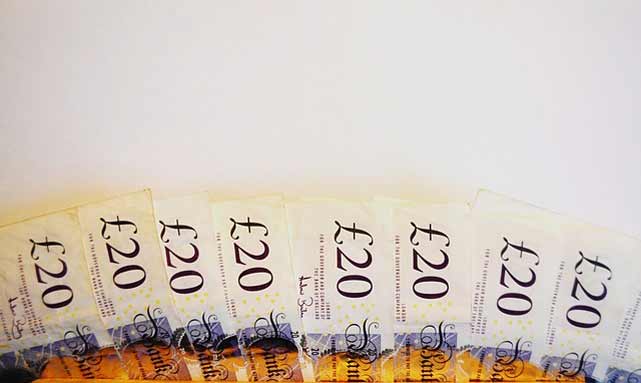Pound Australian Dollar (GBP/AUD) Exchange Rate Spikes Despite RBA Hike
November 7, 2023 - Written by Toni Johnson

The Pound Australian Dollar (GBP/AUD) exchange rate spiked to the best conversion in a week after the Reserve Bank of Australia (RBA) increased interest rates to 4.35% at the latest policy meeting, in line with consensus forecasts.
Despite a brief spike on the decision, the Australian currency declined sharply.
The Australian dollar to Dollar (AUD/USD) exchange rate slumped to 0.6420 from 0.6500 highs.
From lows at 1.8980, the Pound to Australian dollar (GBP/AUD) exchange rate jumped to weekly highs at 1.9185 before settling around 1.9155.
The accompanying policy statement dropped the reference that further tightening “may be required”. It was replaced by the statement that “whether” further tightening is required will depend on the data.
According to MUFG, it clearly signals that the RBA is less confident that further hikes will be needed in the current tightening cycle and brings it more into line with the thinking of other G10 central banks.
It added; “With the RBA now in data dependent mode, it will require more upside inflation surprises to prompt the RBA to hike further.”

Overall, MUFG is now more confident that interest rates have peaked.
Paul Bloxham, chief economist for Australia and New Zealand at HSBC, said: “We see the RBA as now in ‘calibration mode, we expect that a follow-up hike in December is unlikely.”
In its statement, the RBA expressed determination to tackle inflation; “If high inflation were to become entrenched in people’s expectations, it would be much more costly to reduce later, involving even higher interest rates and a larger rise in unemployment.”
ING was surprised over the market reaction, especially as it considered that the statement was relatively hawkish and pointed to major uncertainties.
It added; “Although the RBA hike was expected by the majority of the forecast community, markets were not completely sold on the idea, which is why it is curious that the AUD weakened on the decision and that bond yields fell.”
ING also expressed concerns over inflation trends and pointed out that annualised inflation over the past two months was running around 7%.
In this context, it pointed to the risk that inflation doesn’t decline further and commented; “If it doesn't, then instead of the rate cuts that we expect could be on the radar by mid-2024, we might still be looking at some further tightening before we can call this rate cycle truly over.”

According to Commerzbank; “If the upcoming data points to continued stubborn inflation, a rate hike could be back on the agenda. Until then, however, the upside potential from the Australian side is likely to remain limited and much will depend on the movement of the USD.”
MUFG also pointed out that global developments will be important for the Australian currency.
In this context, Chinese economic developments will be important and the latest trade data raised fresh uncertainties.
Exports declined 6.4% in the year to October compared with expectations of a 3.3% decline. There was a 3.0% annual increase in imports compared with expectations of a 4.8% decline and the first annual increase for a year.
Zhou Hao, economist at Guotai Junan International commented; "The figures are in contrast to market expectations. The bad exports data may hit market confidence as we had expected the supply chain of exports to recover."
According to Julian Evans-Pritchard, head of China Economics at Capital Economics; "Measures of foreign orders hint at a more significant drop in foreign demand than what has so far been observed in the customs data."
MUFG expects global hurdles; “the external backdrop also remains challenging for the Australian dollar with global growth weak and likely to weaken further next year in response to tighter monetary policy. As a result, it will be difficult for the AUD/USD rate to raise back above the 200-moving average at just above the 0.6600-level in the near-term.”
TD Securities is more positive over the medium-term outlook; “Near term, we see AUD/USD returning to the 0.63-0.65 range. However, taking a longer-term view, we remain bullish on Aussie given our view that the USD correction has begun while the Chinese stimulus should begin to bear fruit.”
STORY LINK Pound Australian Dollar (GBP/AUD) Exchange Rate Spikes Despite RBA Hike

The Pound Australian Dollar (GBP/AUD) exchange rate spiked to the best conversion in a week after the Reserve Bank of Australia (RBA) increased interest rates to 4.35% at the latest policy meeting, in line with consensus forecasts.
Despite a brief spike on the decision, the Australian currency declined sharply.
The Australian dollar to Dollar (AUD/USD) exchange rate slumped to 0.6420 from 0.6500 highs.
From lows at 1.8980, the Pound to Australian dollar (GBP/AUD) exchange rate jumped to weekly highs at 1.9185 before settling around 1.9155.
The accompanying policy statement dropped the reference that further tightening “may be required”. It was replaced by the statement that “whether” further tightening is required will depend on the data.
According to MUFG, it clearly signals that the RBA is less confident that further hikes will be needed in the current tightening cycle and brings it more into line with the thinking of other G10 central banks.
It added; “With the RBA now in data dependent mode, it will require more upside inflation surprises to prompt the RBA to hike further.”

Overall, MUFG is now more confident that interest rates have peaked.
Paul Bloxham, chief economist for Australia and New Zealand at HSBC, said: “We see the RBA as now in ‘calibration mode, we expect that a follow-up hike in December is unlikely.”
In its statement, the RBA expressed determination to tackle inflation; “If high inflation were to become entrenched in people’s expectations, it would be much more costly to reduce later, involving even higher interest rates and a larger rise in unemployment.”
ING was surprised over the market reaction, especially as it considered that the statement was relatively hawkish and pointed to major uncertainties.
It added; “Although the RBA hike was expected by the majority of the forecast community, markets were not completely sold on the idea, which is why it is curious that the AUD weakened on the decision and that bond yields fell.”
ING also expressed concerns over inflation trends and pointed out that annualised inflation over the past two months was running around 7%.
In this context, it pointed to the risk that inflation doesn’t decline further and commented; “If it doesn't, then instead of the rate cuts that we expect could be on the radar by mid-2024, we might still be looking at some further tightening before we can call this rate cycle truly over.”

According to Commerzbank; “If the upcoming data points to continued stubborn inflation, a rate hike could be back on the agenda. Until then, however, the upside potential from the Australian side is likely to remain limited and much will depend on the movement of the USD.”
MUFG also pointed out that global developments will be important for the Australian currency.
In this context, Chinese economic developments will be important and the latest trade data raised fresh uncertainties.
Exports declined 6.4% in the year to October compared with expectations of a 3.3% decline. There was a 3.0% annual increase in imports compared with expectations of a 4.8% decline and the first annual increase for a year.
Zhou Hao, economist at Guotai Junan International commented; "The figures are in contrast to market expectations. The bad exports data may hit market confidence as we had expected the supply chain of exports to recover."
According to Julian Evans-Pritchard, head of China Economics at Capital Economics; "Measures of foreign orders hint at a more significant drop in foreign demand than what has so far been observed in the customs data."
MUFG expects global hurdles; “the external backdrop also remains challenging for the Australian dollar with global growth weak and likely to weaken further next year in response to tighter monetary policy. As a result, it will be difficult for the AUD/USD rate to raise back above the 200-moving average at just above the 0.6600-level in the near-term.”
TD Securities is more positive over the medium-term outlook; “Near term, we see AUD/USD returning to the 0.63-0.65 range. However, taking a longer-term view, we remain bullish on Aussie given our view that the USD correction has begun while the Chinese stimulus should begin to bear fruit.”
International Money Transfer? Ask our resident FX expert a money transfer question or try John's new, free, no-obligation personal service! ,where he helps every step of the way, ensuring you get the best exchange rates on your currency requirements.
Comments are currrently disabled
Related Stories:
- Australian Dollar: Asian Markets Collapse on Trade Fears, GBP/AUD Sees 1% Pullback - April 7, 2025
- Pound to Australian Dollar SURGES to Best Buy in 9 Years on Global Trade War Fears - April 5, 2025
- Hawkish RBA Rate Cut Underpins the Australian Dollar, GBP/AUD Holds Steady - February 19, 2025
- GBP/AUD Outlook: Pound Targets 4-Year Best vs Australian Dollar - December 10, 2024
- Pound to Australian Dollar Forecast: GBP/AUD Dips on RBA Rate-Hike Warning - June 19, 2024
- Australian Dollar Slips as RBA Keep Options Open: Pound to AUD Forecast - May 7, 2024
- Pound to Australian Dollar Rate Posts 2-Week Highs above 1.92 on RBA Hold - December 6, 2023
- Pound Sterling loses out to Australian and New Zealand Dollars as Global Risk Appetite Surges - November 16, 2023
- Pound Australian Dollar (GBP/AUD) Exchange Rate Spikes Despite RBA Hike - November 7, 2023
Latest News:
- Pound to Dollar LIVE: 7th Consecutive Daily GBP Gain, "Momentum Remains Bullish" - April 16, 2025
- Pound to Euro Forecast: "GBP to Underperform EUR as Dollar Weakens" - April 16, 2025
- Euro to Pound Rate Trading 0.85-0.87 Range as CPI Drops Temporarily - April 16, 2025
- Pound-to-Dollar Rate Now Pushing to 1.34, Sterling's 2024 Best in Sights - April 16, 2025
- Pound to Dollar Forecast: Scope for GBP/USD Gains to 1.3290 say UoB - April 16, 2025
- Euro to Dollar Forecast: EUR Dip Buying, as "Deterioration of US Data Likely" - April 15, 2025
- GBP/USD Forecast: Pound Sterling Strikes Six-Month Best on UK-US Trade Deal Hopes - April 15, 2025
- Pound-to-Euro Rate Supported Despite Soft UK Wage Data - April 15, 2025
- Euro to Pound Sterling Forecast: Sell "Towards 0.850" on Equity Futures Stabilisation - April 15, 2025
- Pound Recovers Against Euro and Dollar as Sterling Outperforms G10 Currencies - April 15, 2025








